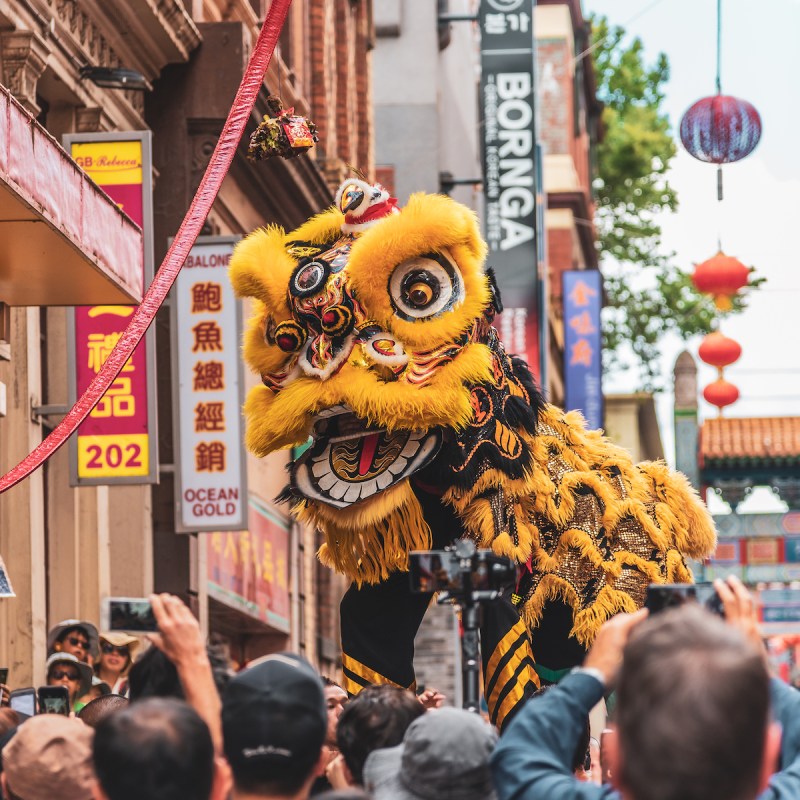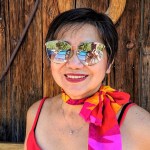
The Philippines was a Spanish colony for 333 years, but the Chinese also arrived in droves. A Filipino is either a Pinoy (native), Tisoy (Spanish), or Tsinoy (Chinese). I am a mix of the first two, but my family frequented Manila Chinatown, so it’s part of my heritage. I make it a point to visit these neighborhoods where I visit. Fortunately, my children (and grandchildren) settled in areas with a Chinatown.
Videos by TravelAwaits
The Chinese emigrated in waves when they felt pushed out of their homeland because of economics or politics. Thousands also left when major happenings pulled them into other countries. For these reasons, many Chinatowns were born and they have become tourist destinations. The following are my favorites.

1. Manila
Manila Chinatown is the oldest on this list! It was created by Spanish missionaries circa 1594 for the Catholic Chinese in Binondo. Later, it expanded to five neighboring districts.
The place to visit is Divisoria Market with malls and street stalls. It’s the Philippines’s bargain center, where you can find very low-priced goods, great Chinese food, and knockoff products at unbelievable prices. After dusk, it transforms into a vibrant night market.
Pro Tip: Be sure to visit the historic Binondo Church and sample classic Chinese pastries like hopia, tikoy, and mooncakes at Eng Bee Tin. For authentic Chinese cuisine, go to Toho Panciteria Antigua, the country’s oldest restaurant (since 1888).

2. San Francisco
San Francisco’s Chinatown is the oldest in the U.S. (since 1848). The lovely Dragon Gate ushers you onto 30 blocks around Grant Avenue and Stockton Street. The neighborhood houses 10,000 people, stores, and eating, cocktail, and karaoke joints, etc. Streets are festooned with round bright-red lanterns, while ornate temples complete the festive atmosphere.
It was the Gold Rush in the mid-1800s that attracted thousands of Chinese men. They came again to help build the Transcontinental Railroad from 1865–69. It’s interesting to note that this neighborhood attracts more visitors than the Golden Gate Bridge.
Pro Tip: My eldest daughter lives in the Bay Area and my foodie granddaughter introduced me to Good Mong Kok Bakery, where the dim sum is so good you are content to eat your favorites standing on the sidewalk. Or you can bring them home!

3. Melbourne
My youngest daughter chose to migrate to Melbourne. So I also got to know their Chinatown, which grew from Little Bourke Street, where the Chinese settled following the discovery of Australian gold in 1851.
This Chinatown has predominantly become a food mecca with an entire range of eating places. Besides Chinese food, it’s the place to get other Asian favorites and even European and Australian cuisines.
All year, festivals are celebrated around the historic streetscape, which has been well preserved, along with the five refurbished entrance arches. Discover Tianjin Gardens, shop at Asian groceries, and visit a couple of plazas.
Pro Tip: My foodie daughter loves Juicy Bao’s dumplings, Woodo for Korean barbeque, and lots of hot-pot places. For fine dining, Flower Drum brings back dynastic luxury food.

4. Vancouver
My eldest daughter lived in Seattle before the Bay Area, so I settled there when I migrated. We would take the less-than-3-hour trip to Vancouver to get much-missed Chinese and Filipino food at the Vancouver Chinatown. This community, next to the touristy Gastown, is traced to the Chinese that were recruited to build the difficult section of the Canadian Pacific Railway through the Canadian Rockies (Vancouver to Calgary).
This Chinatown is the third largest in North America behind New York City and San Francisco. It also has that special serene Sun Yat Sen Garden in the middle of skyscrapers. The annual Chinese New Year Parade is also well attended.
Pro Tip: We bought Chinese siopao and other goodies at Newtown Bakery. And the iconic Filipino chain restaurant Goldilocks has all the Filipino comfort food I like.

5. Seattle
This brings me to Chinatown in Seattle, where the same foodie granddaughter lives now. The area near Pioneer Square was the first stop for virtually all Asian immigrants. The Chinese came first in the 19th century, but now it is called the Chinatown-International District with two additions: Japantown and Little Saigon.
Enter the historic Chinatown Gate; get the story of the neighborhood at the Wing Luke Museum; and visit the restaurants, galleries, and supermarkets. Take time to stop at Hing Hay Park where you can find locals playing ping-pong.
Pro Tip: Honey Court Seafood is the go-to place for family-style Chinese food and dim sum. Or visit Tai Tung, Seattle’s oldest Chinese restaurant, where Bruce Lee was a regular! And be sure to get a good dose of Asian goods at Uwajimaya.

6. Las Vegas
Las Vegas is just 5 hours from Phoenix where we are now based, so the 3-mile Chinatown Vegas around Spring Mountain Road has become “the other strip” for us. A huge Chinese Pagoda marks its entrance but the Journey to the West Monument is the attraction. It’s a gold statue in the parking lot that showcases Buddhist monk Tan San Zhang, his white horse, and his three protectors from the classic Chinese novel Xi You Ji, or Pilgrimage to the West.
It’s as busy and exciting as the Strip with two CBD dispensaries, 40 massage spas, several shooting ranges, and also martial arts schools. Its eastern character spawned 20 strip malls, 150 restaurants, six Asian supermarkets, dozens of Asian churches, and the Little Vegas Theater.
Pro Tip: Seafood City is the largest Filipino supermarket chain in the U.S. and Canada, and there is one in Chinatown Vegas.

7. Calgary
My third and middle daughter chose to settle in Calgary, Alberta, so we have also explored the Calgary Chinatown on Centre Street. In 1883, many of the Chinese who worked on the Canadian Pacific Railway settled in Calgary after it was completed. The beautiful Chinese Cultural Center, the biggest such facility in North America, is styled after the Temple of Heaven, which is a UNESCO World Heritage Site in Beijing. North of Centre Street, a “second” Chinatown has emerged out of Asian-inspired businesses.
Pro Tip: We love to eat at Silver Dragon Restaurant, where a long line of people usually waits to get amazing dim sums. Be sure to stop at Rainbow Bakery inside the Dragon City Mall to sample the divine Hongkong egg tarts and other Chinese pastries.
8. Victoria
It was the beautiful Butchart Gardens that drew us to Victoria on Vancouver Island. But we considered ourselves lucky to also find the small and charming Victoria Chinatown. It’s the oldest in Canada, second only to San Francisco in North America. Founded by Chinese merchants from San Francisco during the Fraser River Gold Rush of 1858, it’s now a National Historical Site.
There are rows of restaurants offering great Asian food around a couple of blocks. But it is the tiny alleys that hold the heart of this Chinatown. We found so many interesting little shops at the narrow but colorful Fan Tan Alley.
Pro Tip: Be sure to spend some time at the Umbrellatorium and Canery, a unique little store of different kinds of umbrellas and canes.
Do yourself a favor: If the city you are visiting has a Chinatown, add it to your itinerary. Sample authentic Chinese food, shop for unique souvenirs from the East, visit temples and museums, and unravel the Chinese mystique.
